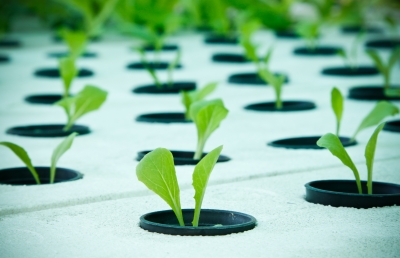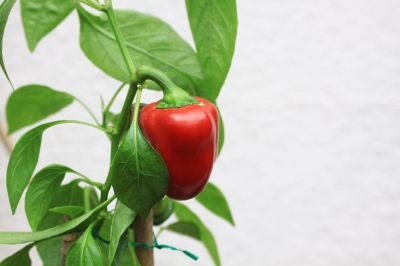Advantages of Using Wooden Mulch
Many plant species are highly adaptable to their environments. Some are capable of thriving in extreme conditions such as in the arid and hot environments of deserts. Even with minimal nutrients and water, many plant species can survive. Hence, it is not surprising why they can be cultivated and grown in soilless media. Wooden mulch is one of the most common materials that can be used both in hydroponic and soil-based gardening.
As long as water, sunlight and the essential nutrients are present, plants can thrive. Hydroponic systems allow for convenient horticultural and agricultural cultivations in places that have scarcity of arable lands. These systems are also ideal for indoor plant cultivation. These make it possible for high-rise apartments to have balcony gardens or garden rooms. Using wooden mulch for these indoor gardens is excellent in terms of providing mechanical support and moisture retention.
Wooden mulch is typically used in conjunction with other growth media such as soil, vermiculite and perlite. Wooden mulch is laid on top of the main growth media to minimize water evaporation, regulate temperature, and provide some protection against weed growth. Since wooden mulch is an organic material, it may eventually decompose. The decomposition will provide additional nutrients for the plants. As the mulch decomposes, it helps improve soil permeability, bioactivity and structure.
Using wood mulch is also good in terms of helping in environmental conservation. These materials are commonly derived from scrap recycled wood materials such as from demolished buildings. In this manner, the scrap wood materials are not wasted. Wood mulch can also be derived from pruned and lopped trees. Aside from helping in recycling, using wood mulch and chips also enhance the aesthetic appeal of garden surface. These materials are commonly used in landscape design and playground surfacing because of their ability to lessen mechanical impact.
If you want to learn about topics on how to control FUNGUS gnats, simply click on the hyperlink. You may also visit our website at this https://www.cxhydroponics.net for other related details.

 If you are maintaining a hydroponic garden on your own, you have to be familiar with hydroponic nutrients. Generally, plants grown hydroponically need the same type of nutrients as those grown in soil. When you look for fertilizers (or nutrients in hydroponic gardening) you see 3 numbers on the bottle or bag. These numbers are the N-P-K (Nitrogen-Phosphorus-Potassium) for a specific fertilizer. The numbers stand for the percentage for each nutrient that's in the container. Also it's important for you to know essential macronutrients and micronutrients plants require.
If you are maintaining a hydroponic garden on your own, you have to be familiar with hydroponic nutrients. Generally, plants grown hydroponically need the same type of nutrients as those grown in soil. When you look for fertilizers (or nutrients in hydroponic gardening) you see 3 numbers on the bottle or bag. These numbers are the N-P-K (Nitrogen-Phosphorus-Potassium) for a specific fertilizer. The numbers stand for the percentage for each nutrient that's in the container. Also it's important for you to know essential macronutrients and micronutrients plants require.  If you see adult fungus gnats flying around or near your plants, for sure there are also larvae feasting on your plants' roots. To monitor their population, use little yellow sticky strips placed horizontally right next to your plants. The adult gnats are not good in flying, making them very easy to trap. The yellow sticky traps are useful for monitoring the population but they cannot control the larvae which create the real damage to plants. Here are some simple fungus gnat prevention tips targeting the larvae.
If you see adult fungus gnats flying around or near your plants, for sure there are also larvae feasting on your plants' roots. To monitor their population, use little yellow sticky strips placed horizontally right next to your plants. The adult gnats are not good in flying, making them very easy to trap. The yellow sticky traps are useful for monitoring the population but they cannot control the larvae which create the real damage to plants. Here are some simple fungus gnat prevention tips targeting the larvae.  Are your pepper plants not doing very well? Are they producing lots of lush foliage but there is only few or no flowers at all? This sounds a bad thing. You should do something about it before all your efforts, time, and money go to waste. So how do you get them to bud, bloom, and bear an abundant amount of food? Here are some best flower enhancer tips:
Are your pepper plants not doing very well? Are they producing lots of lush foliage but there is only few or no flowers at all? This sounds a bad thing. You should do something about it before all your efforts, time, and money go to waste. So how do you get them to bud, bloom, and bear an abundant amount of food? Here are some best flower enhancer tips: Pythium or root rot disease harms the roots of your plants, turning while healthy roots to grey or brown. It's often called the problem of damping off. Typically, rigid root zones start to slime as they are damaged and clog the system with dead organic debris. An infected root system is an excellent environment for pathogens to thrive and flourish, and could rapidly circulate and harm other plants, particularly those grown in hydroponic systems. So to keep your plants healthy take note of this Pythium treatment guide:
Pythium or root rot disease harms the roots of your plants, turning while healthy roots to grey or brown. It's often called the problem of damping off. Typically, rigid root zones start to slime as they are damaged and clog the system with dead organic debris. An infected root system is an excellent environment for pathogens to thrive and flourish, and could rapidly circulate and harm other plants, particularly those grown in hydroponic systems. So to keep your plants healthy take note of this Pythium treatment guide:  Tomatoes in a hydroponic garden are grown in nutrient solution, instead of garden soil. Growing tomatoes using a hydroponic system allows you to raise them in a regulated environment without insects, weeds, or soil-borne diseases. Hydroponic tomatoes grow significantly faster than those grown in soil, and provide greater yields. Here is a step-by-step guide in growing tomato plants hydroponically:
Tomatoes in a hydroponic garden are grown in nutrient solution, instead of garden soil. Growing tomatoes using a hydroponic system allows you to raise them in a regulated environment without insects, weeds, or soil-borne diseases. Hydroponic tomatoes grow significantly faster than those grown in soil, and provide greater yields. Here is a step-by-step guide in growing tomato plants hydroponically: